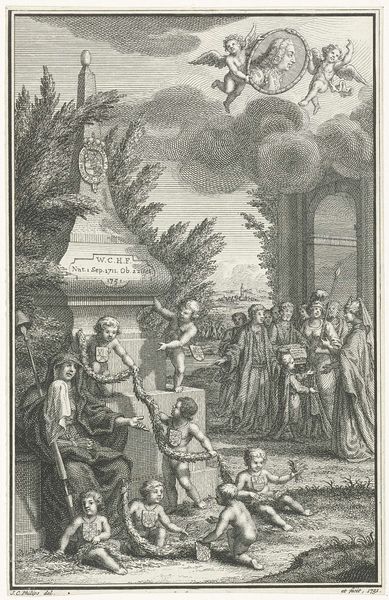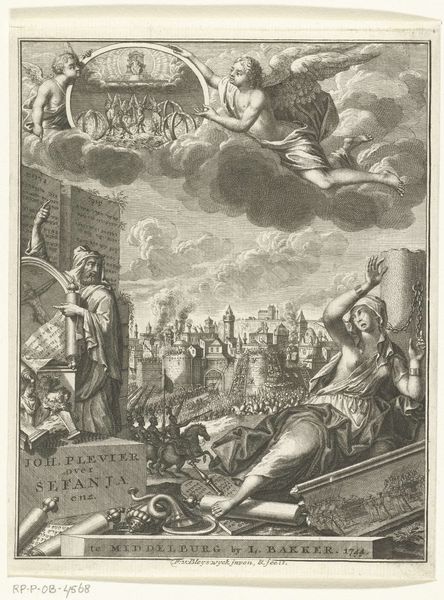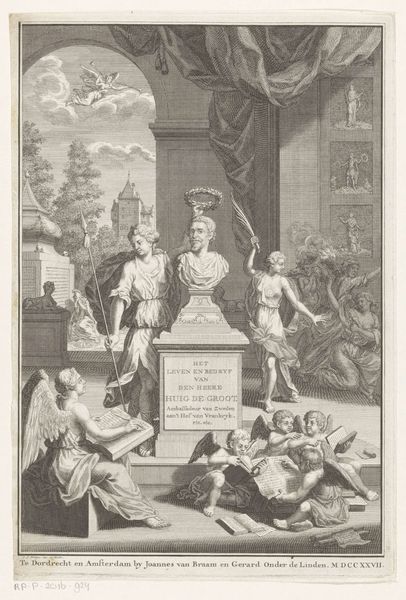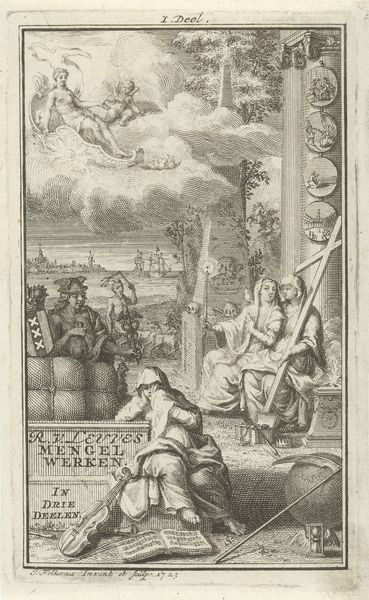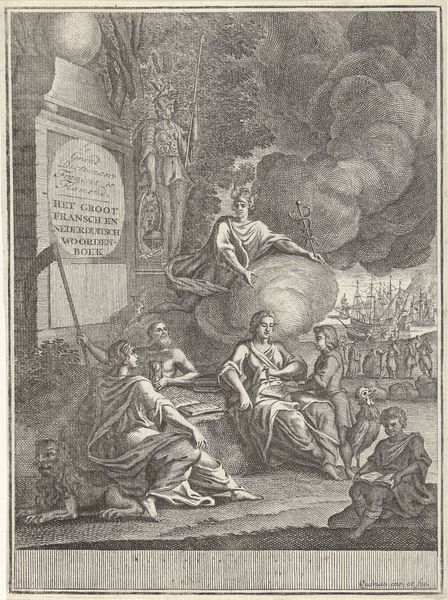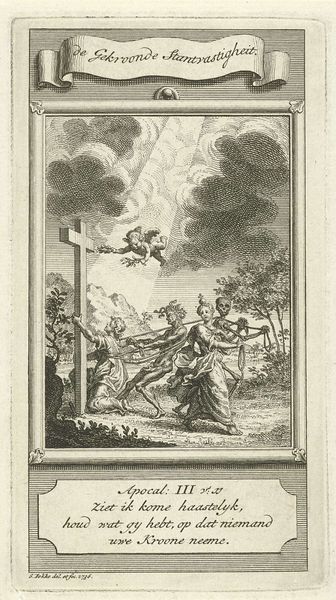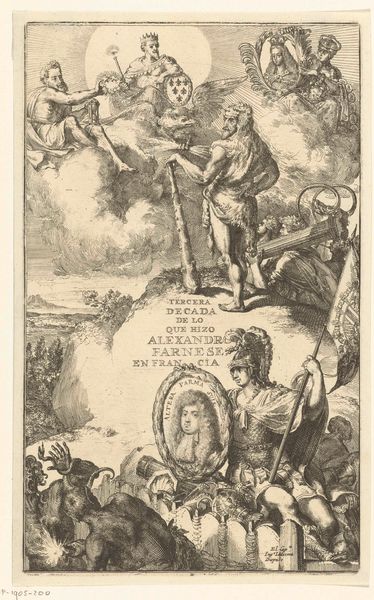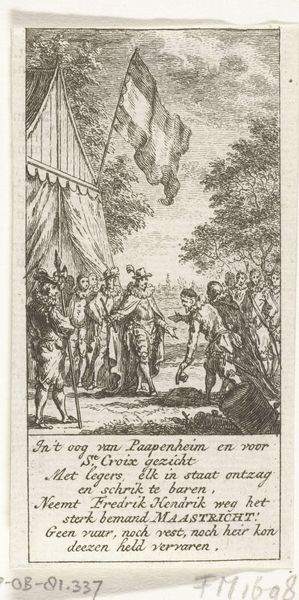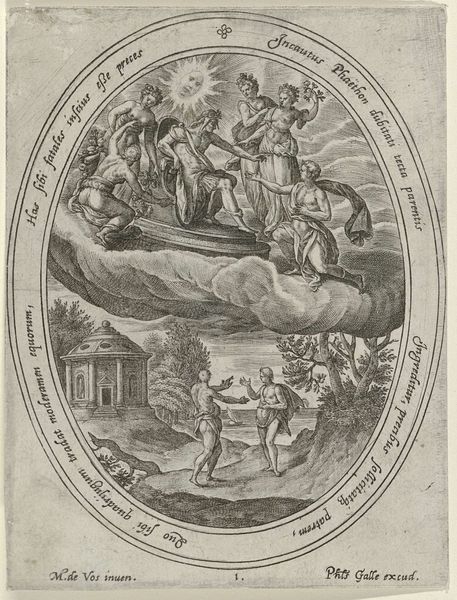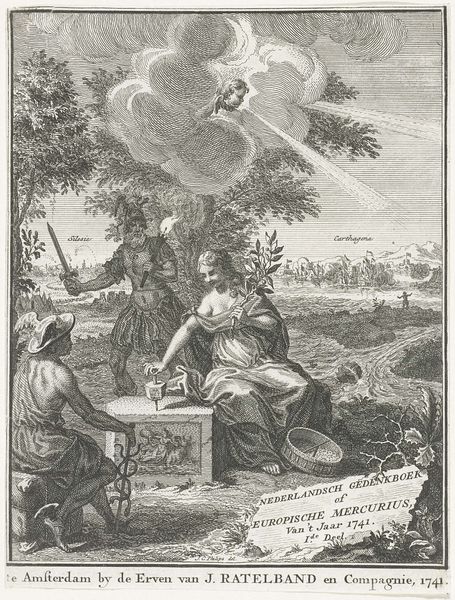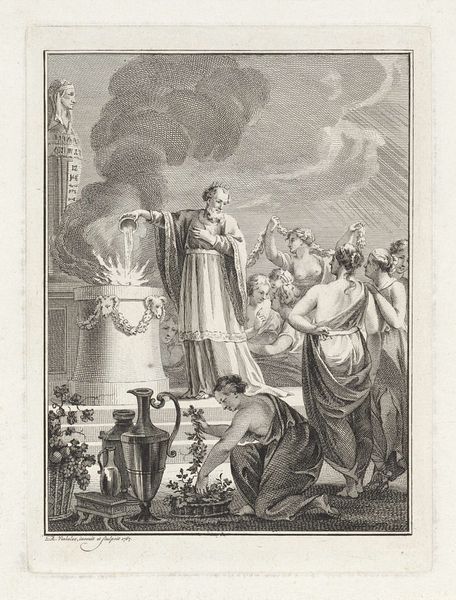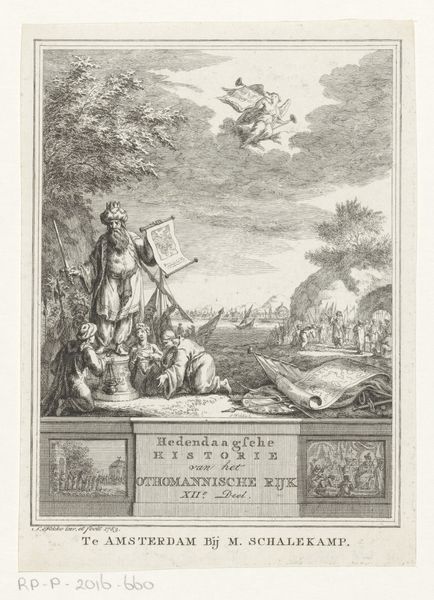
graphic-art, print, engraving
#
graphic-art
#
allegory
#
baroque
# print
#
old engraving style
#
engraving
Dimensions: height 173 mm, width 138 mm
Copyright: Rijks Museum: Open Domain
Editor: This engraving is the title page for the Europische Mercurius of 1748. It's rendered in that distinctive, detailed Baroque style. There is so much going on—allegorical figures, a detailed landscape, and it’s clearly designed for mass production. What can you tell me about it? Curator: Let's focus on the process of creating a print like this in 1748. Engraving was labor-intensive. Someone, likely multiple artisans, meticulously cut lines into a metal plate. We have to consider their skills, the time invested, and the socio-economic implications of such specialized labor. How do you think the engraver's social status might influence the work? Editor: I hadn’t thought of it that way, I suppose being a skilled artisan, they’d have a certain standing, yet remain dependent on patrons or publishers like Van Gerrevink. Would the type of metal used for the plate affect the quality and lifespan of the prints? Curator: Precisely! The choice of material—copper or steel, for example—directly impacts the number of impressions that can be made before the plate degrades. And what about the ink? Consider its composition, source, and how that contributes to the final image we see. Furthermore, the print facilitated distribution of information, reflecting a growing commercialization and public sphere. Do you think the artist made the right choices about the paper and ink? Editor: The print looks very clear; so, it must be adequate materials. So, from a materialist perspective, even an allegorical image speaks to the economics and labor conditions of its creation, right? Curator: Absolutely! This engraving isn't just about allegory, it's about material production, consumption, and the circulation of ideas within a specific historical context. We must ask what was this publication really about? How would that information have benefitted the people? How was it distributed, received, and acted upon? What power structures are at play? Editor: That’s given me a whole new way to look at prints! It is far more complicated than I considered.
Comments
No comments
Be the first to comment and join the conversation on the ultimate creative platform.
